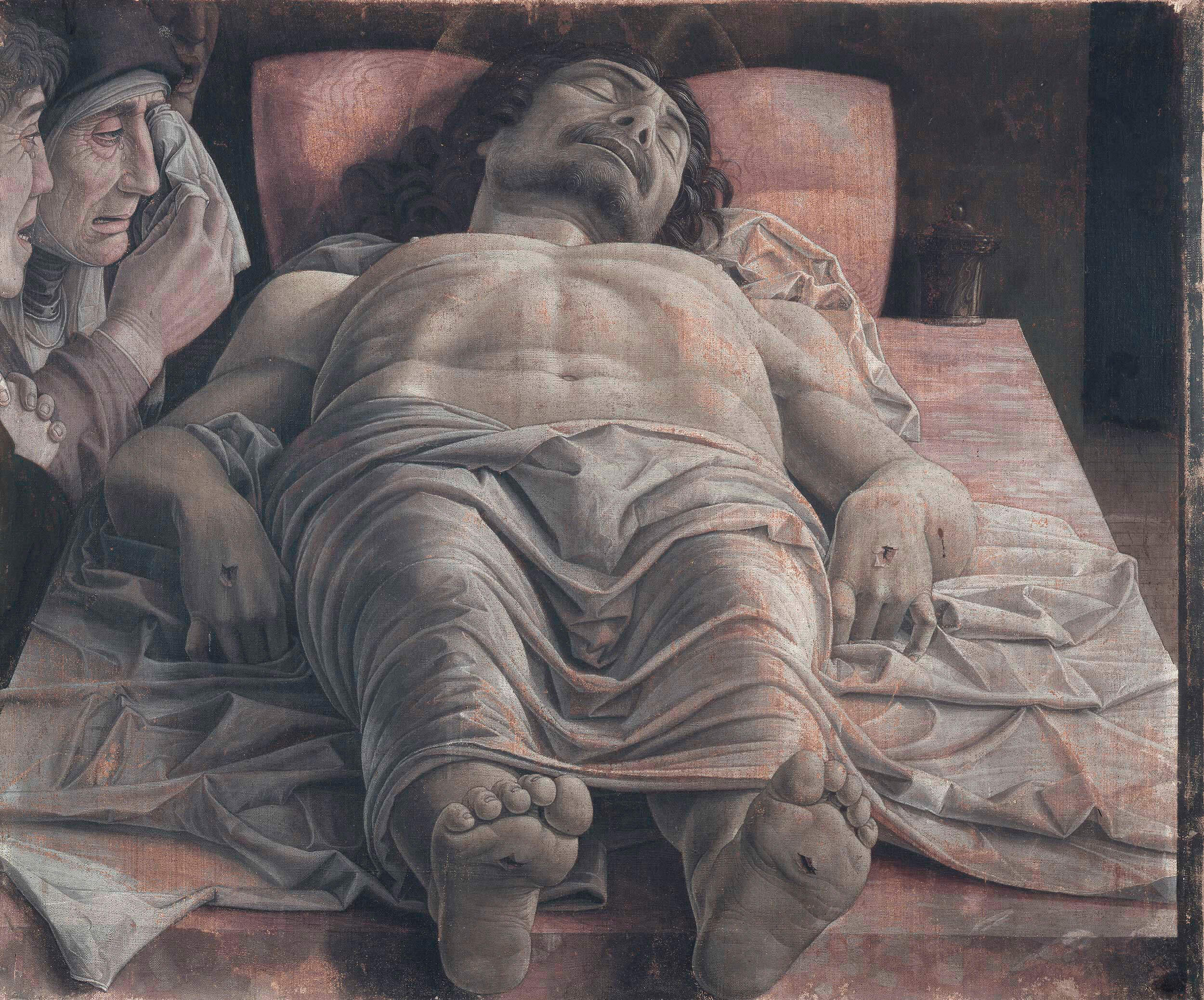Possibly painted for the artist’s own burial chapel, this breath-catching treatment of a familiar episode takes us right to the heart of things. The corpse is laid on dappled marble, and Mary Magdalene is just visible behind Mary and St John on the left. All three seem to be gasping for air, and can’t even bring themselves to touch him. The viewer is almost level with Christ’s feet, as if taken into the tomb itself. The nails have torn his skin as if it were dry, flimsy paper and look how the hands are raised to offer a clearer look at his wounds. Jesus’ face is turned away from them, his final words (“why have you forsaken me?”) still on his lips. The gorgeous folds of cloth remind us of the swaddling in the manger (“in my beginning is my end…”), and the foreshortened perspective makes visible grief’s distortions and discombobulations. (Michelangelo’s Pietà, with a very different view, displays the same remarkable inconsistency of scale). This is a Christian story, obviously, but its resonances are eternal. We’re asked to consider love in its various guises, to wonder how much any human heart can take, and to ponder a central paradox of existence: that suffering and grief can be enriching and even fulfilling.

 Study after Velazquez’s Portrait of Pope Innocent X
Study after Velazquez’s Portrait of Pope Innocent X